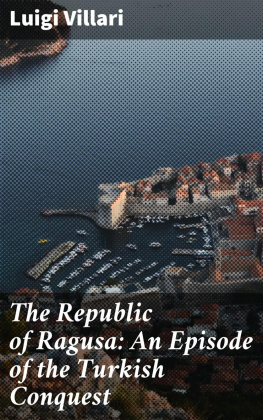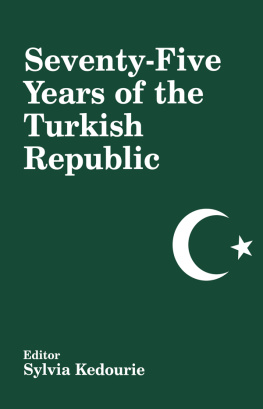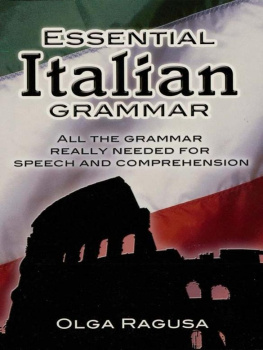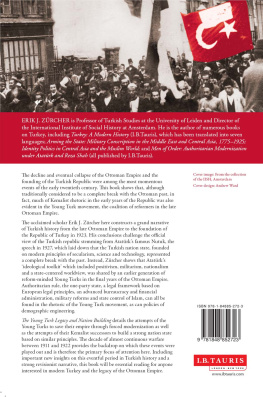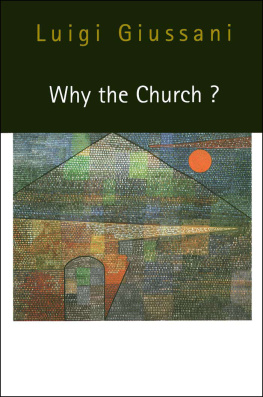CHAPTER I
INTRODUCTION
Table of Contents
T HE eastern shore of the Adriatic from the Quarnero to the Bocche di Cattaro is a series of deep inlets and bays, with rocky mountains rising up behind, while countless islands, forming a veritable archipelago, follow the coastline. The country is for the most part bare and stony. The cypress, the olive, the vine grow on it, but never in great quantities. Patches of juniper and other bushes are often the only relief to the long stretches of sterile coast. Here and there more favoured spots appear. At Spalato and in the Canale dei Sette Castelli, on the island of Curzola, in the environs of Ragusa, the vegetation is luxuriant, almost tropical. But Dalmatia is always a narrow strip, and as one proceeds southwards it becomes ever narrower, the mountain ranges at various points coming right down to the waters edge. The land is subject to intense heat in summer, and is free from great cold, even in the middle of winter. But it suffers from fierce winds, from the bora, which, whirling down from the treeless wastes of the Karst mountains in the north-east, sweeps along the coastline with terrific force. Another curse from which it suffers is the frequency and severity of the earthquakes, which from time to time have wrought fearful havoc among the Dalmatian towns.
But in spite of these disadvantages, along this shore a Latin civilisation arose and flourished which, if inferior to that of Italy, nevertheless played an important and valuable part in European development. Many wars were fought for the possession of Dalmatia. Roman, Byzantine Greek, Norman, Venetian, Hungarian, Slave, and Austrian struggled for it, and each left his impress on its civilisation, although the influence of two among these peoples far surpassed that of all the othersthe Roman and the Venetian.
Dalmatia has at all times been essentially a borderland. Geographically it belongs to the eastern peninsula of the Mediterranean, to the Balkan lands. But this narrow strip of coast, as Professor Freeman said, has not a little the air of a thread, a finger, a branch cast forth from the western peninsula. In its history its character as a march land is still more noticeable, and this feature has always been manifested in a series of civilised communities in the towns, with a hinterland of barbarous or semi-civilised races. Here were the farthest Greek settlements in the Adriatic, settlements placed in the midst of a native uncivilised Illyrian population. Here the Romans came and conquered, but did not wholly absorb, the native races. Then the land was disputed between the Eastern and the Western Empires, later between Christianity and Paganism, later still between the Eastern and Western Churches. The Slavonic invasion, while almost obliterating the native Illyrian race, could not sweep away the Roman-Greek civilisation of the coast. Again Dalmatia became the debating ground between Venetian and Hungarian, the former triumphing in the end. When Christianity found itself menaced by the Muhamedan invasion, Dalmatia was the borderland between the two faiths. A hundred years ago it was involved in one phase of the great struggle between England and France. To-day, under the rule of a Power which may be said to be all borderland, it is the scene of another nationalist conflict between two races. As before we still have a civilised fringe, a series of towns, with a vast hinterland inhabited by Slaves, by a race less civilised, yet wishing to become civilised on lines different from those of the Latin race. It is still the borderland between the Catholic and the Orthodox religions, and also between the two branches of the South-Slavonic peoplethe Croatians and the Serbs.
The Dalmatian townships had many features in their development similar to those of the towns of Italy, especially of the maritime republics. But, unlike their Italian sisters, they were always on the threshold of barbarism, and this fact imparts to their history its peculiar character. They were essentially border fortresses, keeping watch and ward to save their civilisation from being swept into the sea by the advancing tide of Slave and Turk.
Of all these towns, that in which this feature is most marked is Ragusa. Ragusas development shows in every way a stronger individuality than that of any other. For three characteristics above all is this city remarkable, characteristics which enabled it to attain and preserve such a peculiar position in the Adriatic. The first is its geographical situation. Ragusa was, as it were, the gate of the East, the meeting point of Latin and Slave, of the Eastern and Western Churches, of Christian and Muhamedan. One of the chief commercial highways from the coast to the interior had its terminus at Ragusa, while the sheltered position of its harbour, and of that of the neighbouring Gravosa, indicated it as meant by nature for a great commercial centre. Here the Slaves from the interior found their nearest market, and the nearest spot where civilisation and culture flourished. Ragusa was the means of spreading the beginnings of progress among the benighted Servian lands, for with the caravans of Western goods which made their way into the Herzegovina, Bosnia, and Servia, Western ideas penetrated as well, and to Ragusa came the sons of Slavonic princelings and nobles to be educated. Here there were schools where learned professors and famous men of letters from Italy taught. Italy came to impart Italian culture to the Ragusans and the Slaves.
Even to-day, when trade follows other routes, and Ragusa, no longer a great commercial centre, is reduced to a humble position, it is still the meeting point of many races. Italians, Bosnians, Herzegovinians, Montenegrins, Albanians, Turks, and Greeks throng its streets and piazzas on market days, filling them with brilliant costumes. Now that the railway from Mostar and Sarajevo has reached Gravosa, there is reason to hope that the ancient city of St. Blaize may once more become a trading centre of some importance. The prosperity of the hinterland which Austria-Hungary has reclaimed to civilisation cannot fail to have a favourable effect on Ragusa. Had not the Turkish invasion swept over the Balkans in the fourteenth, fifteenth, and sixteenth centuries, Ragusas position as a civilising influence would have been still more considerable. Later its rle changed to that of intermediary between the Christian Powers and the Sultan, and in its history we see reflected on a small scale the vast struggle which convulsed Europe for four hundred years.
The second characteristic of Ragusa is its natural position. It is one of natures fortresses, being surrounded by the sea on three sides, and the rocks on which it is built drop sheer down to the waters edge. It seemed indeed a suitable spot on which to erect a city, in days when security was the first, almost the only, consideration. As we approach Ragusa from the south, it stands out a mass of rocks rising up from the sea, crowned with towers, bastions, and walls, which have defied ages of storm and stress, still imposing, still beautiful.
A third feature intimately connected with the last is Ragusas character as a haven of refuge. While all around there was chaos and strife, at Ragusa there was peace. The original inhabitants had fled from the ruins of Epidaurum and Salona, and fortified themselves here; subsequently other refugees from all parts of the country helped to increase the population, for the hospitality of its walls was denied to none. The Ragusans were ever ready, as they proved many a time, to undergo any risk rather than give up those who had placed themselves under the protection of the rock-built city. Even in recent times Ragusa remained true to its past; when in 187677 there was revolution in the Herzegovina, and the savage Turkish soldiery were at their accustomed work of massacre and torture, the luckless Christian rayahs found shelter and protection at Ragusa, as their ancestors had done before them.


